- Inside Scuba
- Posts
- When Dive Tourism Becomes Too Much: The Growing Strain on Our Favorite Sites
When Dive Tourism Becomes Too Much: The Growing Strain on Our Favorite Sites
For most divers, including myself, travel is part of the attraction. We plan trips around places that promise something special: healthy reefs, unique marine life, or historical wrecks. Many of us have a list of destinations we dream of visiting, and when we finally get there, it feels like the reward for years of effort and investment. But the truth is, some of the most famous dive locations in the world are suffering from the very tourism that made them popular. Dive tourism has become one of the biggest contributors to both awareness and decline in fragile marine environments. The dive travel industry has grown quickly, and in some regions, the number of divers now exceeds what the local ecosystem can sustain.
The character of a site can change once it becomes a hotspot. New locations pop up from time to time, and the early years are often quiet and unspoiled. Then, exposure increases through social media, magazines, and word of mouth, and before long, boatloads of divers are arriving every day. The pattern repeats across the world: reefs damaged by contact, animals disturbed by overexposure, and local infrastructure unable to cope with the waste and traffic that tourism brings.
Before we begin, though, I need to make it very clear: I am part of the problem. I have dived all the world's hotspots—from new destinations to the most famous and over-dived areas—and in honesty, I will continue. I am tied in for life; I will always be an underwater photographer and as such will travel to the world's best sites. But what I will do is think about the way my personal diving impacts the area, and continue to take photos that endorse the marine environment.

Someone clearly out of control on the reef
The Great Barrier Reef: Physical Impact in High-Density Zones
The Great Barrier Reef is one of the clearest examples of how overuse can harm a site. It's vast, stretching over 2,300 kilometres (1,429 miles), but dive tourism tends to concentrate on a relatively small number of easily accessible sites near Cairns and the Whitsundays. These areas receive thousands of divers each year. Even with good intentions, that level of traffic leads to problems. Coral breakage from fins, hands, or gauges may seem minor on a single dive, but repeated daily over years, it causes visible wear.
When I first left the UK to become a professional diver, it was to go to Australia. It was my dream, as the Great Barrier Reef was so famous from me growing up watching documentaries about it. But what I saw when I arrived and got my first job in the dive industry was the opposite of the dream I was expecting.
The dive industry I witnessed and worked within was amongst the worst I have ever seen. Boats of over 300 guests who had never experienced a reef before, all had a free "trial" dive included in their package, and most didn't even know it. The destruction of the dive sites was on a colossal scale. There were panicked divers holding on for life to corals, hundreds of snorkelers above them all trying to stand up through fear of drowning and a lack of awareness, and all were destroying the reef.
Divers were dragged around a dead trail and shown a Nemo fish where a photographer would be lying on the reef, ready to take your photo with it for an extra 20 bucks.
Guides do their best to enforce "no-touch" rules, but many operators cater to large groups, and control underwater is difficult as the guests have no experience, and each guide needed to take five or more groups per day.
Boat anchors used in the early years caused widespread damage, and although mooring systems now prevent that in most areas, the reef continues to face physical stress from diver contact and increased sediment movement. It's worth noting that most damage occurs not because of deliberate negligence, but from basic mistakes: poor buoyancy, finning too close to the substrate, or trying to steady oneself for a photograph.
The reef also faces far larger environmental pressures such as bleaching and water quality issues from coastal runoff, but diver activity is one area we can directly control. The most affected zones are those near high-volume day boats. Meanwhile, more remote parts of the reef—visited by liveaboards with strict policies and fewer divers—still remain in good health. That difference illustrates how visitor density, not tourism itself, is often the key issue.
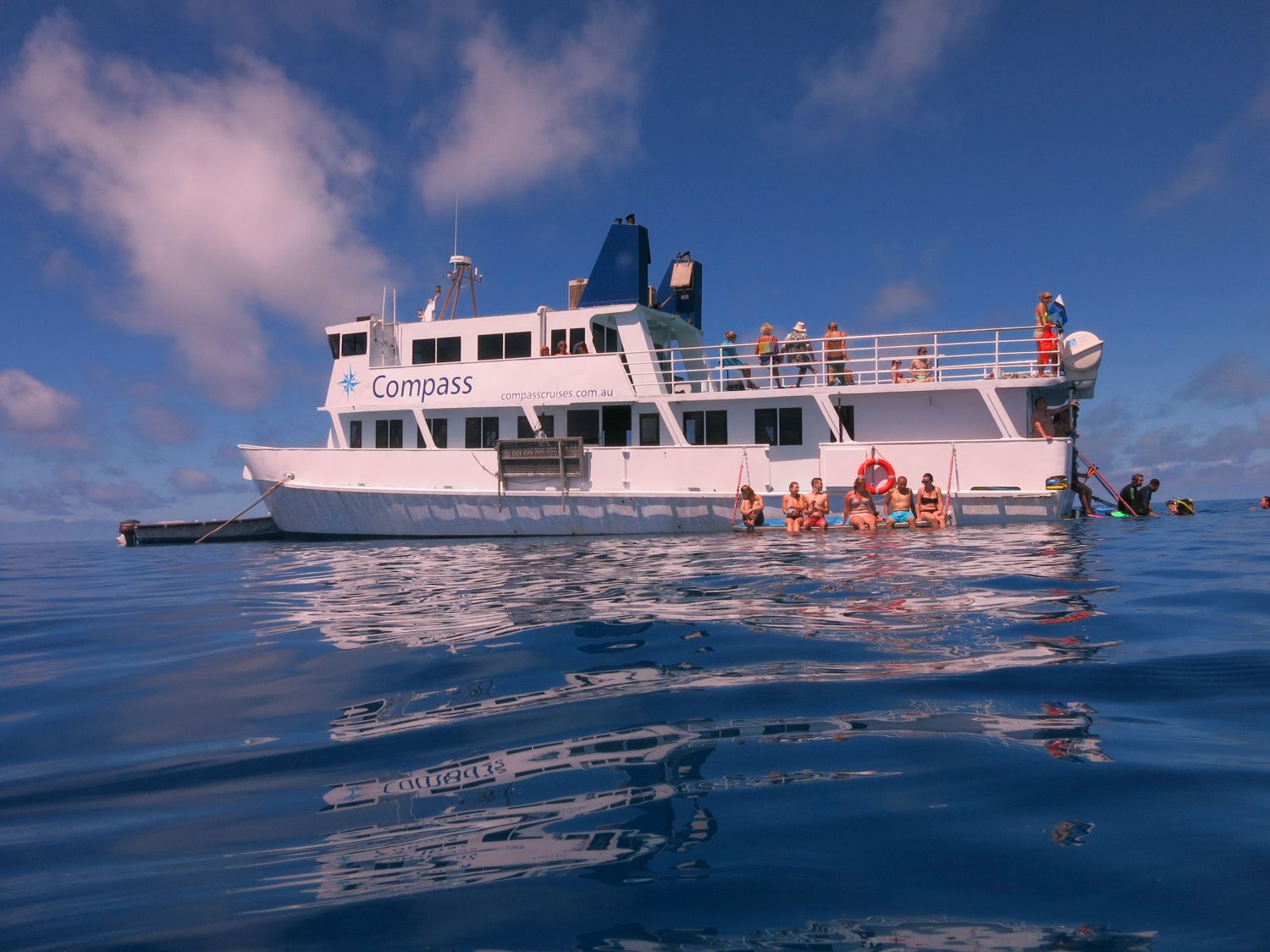
A boat I used to work on, 150 divers and snorkelers a day with little experience
Egypt’s Red Sea: Wrecks and Reefs Under Pressure
In Egypt, dive tourism has been a major part of the economy for decades. The Red Sea offers some of the best visibility and coral diversity anywhere, but it has also suffered from its popularity. Sites within the Ras Mohammed National Park and the Thistlegorm wreck are now so busy that on a good day, you’ll see a line of safari boats anchored side by side. What used to be an adventure has become a production line.
The reefs in Egypt have been lucky to have periodic recoveries from sudden drops in tourist numbers; the revolution and political upheaval in Egypt, followed by the Russian plane crash, and of course the COVID pandemic all caused crashes to tourism visitor numbers, allowing the reefs several year-long respites and recovery times, which is one of the major reasons it is still in such good shape today.
At Ras Mohammed, coral damage from years of contact is visible on the shallower pinnacles; this is the effect of a large number of snorkelers in the area coming in on day boats. On the Thistlegorm, divers without enough experience often hold onto the wreck when currents are pumping. Over time, this has stripped away growth in the high-traffic areas. Fish behavior has changed too. Some species have grown unusually tolerant of divers due to feeding, while others avoid the wreck entirely during peak times.
The problem isn’t limited to physical damage. Boat exhaust, fuel spills, and discarded waste accumulate in these high-use zones. The Red Sea has the advantage of strong currents that disperse pollution, but in bays or sheltered areas like Dahab or Hurghada, debris can build up quickly. Many local operators are aware of this and work hard to limit their impact, but without coordinated management across the entire region, one operator’s good practices can be undermined by another’s negligence.
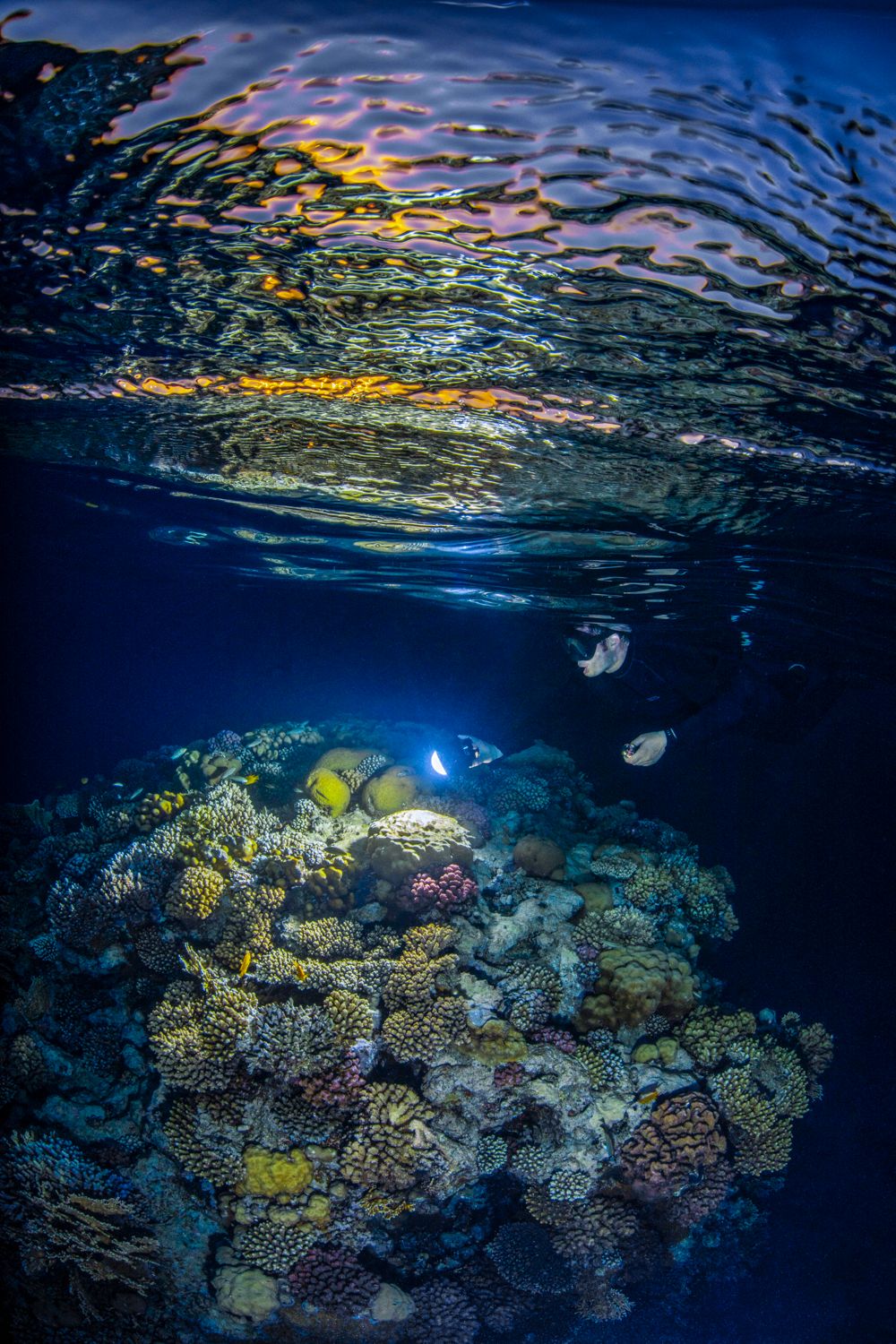
Red Sea reefs have benefitted from pauses in tourism
Indonesia’s Komodo and Raja Ampat: Rapid Growth and Limited Space
Indonesia offers two of the world’s most sought-after destinations: Komodo and Raja Ampat. Both have seen explosive growth in dive tourism in the last decade. Ten years ago, reaching Raja Ampat required effort and expense. Now, there are literally hundreds of liveaboards, daily flights to Sorong, and dozens of new homestays. The increased accessibility has been great for local income but challenging for reef management.
Raja Ampat’s biodiversity is exceptional, but that doesn’t make it immune to damage. Certain dive sites like Blue Magic or Manta Sandy are small and attract large groups at the same time. I’ve seen up to 20 divers circling the same cleaning station. When that happens, manta rays sometimes don’t approach at all. It’s not that divers intend to disturb them, it’s simply that the collective presence becomes too much.
One of my personal favorite animals, the pygmy seahorse, is highly abundant in Raja, but it is the animal that causes so much destruction as divers cling to the reef to get a glimpse of these minute creatures, then struggle to get away from the reef, resulting in kicking their way out of the situation, damaging the very thing they came to see.
Komodo faces similar issues. Batu Bolong, for instance, is a compact pinnacle covered in coral, but it’s now dived by multiple boats every day. The currents there are strong, and less experienced divers often grab rocks or coral for stability. Even small actions repeated hundreds of times cause visible degradation. Dive guides in Komodo are now trained to manage group rotation at certain sites, but enforcement varies dependent on the operator.
It’s important to recognize that both Raja Ampat and Komodo are examples of dive tourism done relatively well. Visitor fees fund marine patrols, and most operators respect park regulations. But the growing volume of divers makes these protections harder to maintain. The reefs aren’t dead, but they’re being slowly worn down.
I have also noticed that with the explosion of popularity of diving in Indonesia, the quality of guides has suffered as more and more are needed to meet the demands of tourism. Indonesian guides are amongst the best I have encountered anywhere on earth, but with such a demand for more and more of them, there is beginning to be a lack of experience within the dive community as it tries to keep up.
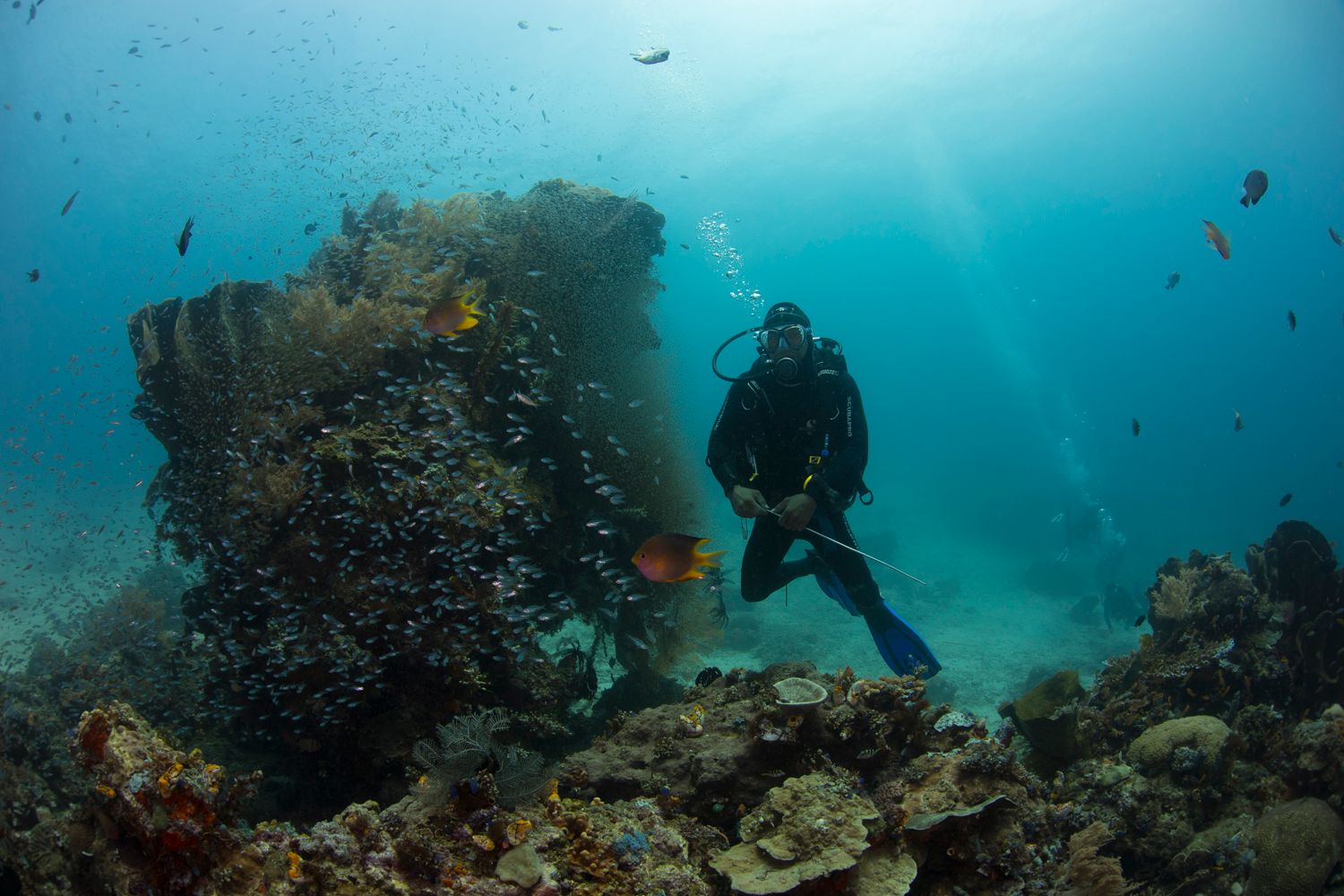
Some poor trim and buoyancy from a guide in Indonesia
The Broader Footprint: Waste, Carbon, and Coastal Pressure
The impact of dive tourism isn’t limited to underwater behavior. The infrastructure that supports diving has its own footprint. Resorts, liveaboards, and transport systems all contribute to carbon emissions and waste. Many remote dive regions lack proper waste management, meaning plastic, grey-water, and sewage can end up in the sea.
Liveaboards, while offering access to remote reefs, often rely on diesel power and generate significant emissions. Some operators now invest in cleaner technology and offset programs, but these remain exceptions. The irony is that divers travel to see pristine environments while inadvertently contributing to their decline through the travel required to get there.
Onshore, the development of dive resorts and accommodation has often led to the clearing of mangroves and coastal vegetation. This reduces natural filtration systems, increasing sediment runoff and nutrient loads in nearby waters. Coral reefs are particularly sensitive to this. Even small increases in turbidity can stress corals and reduce growth rates.
We have all seen the drone videos of the garbage islands in the Maldives, a country who’s whole economy relies on diving but has no solution for the waste it generates.
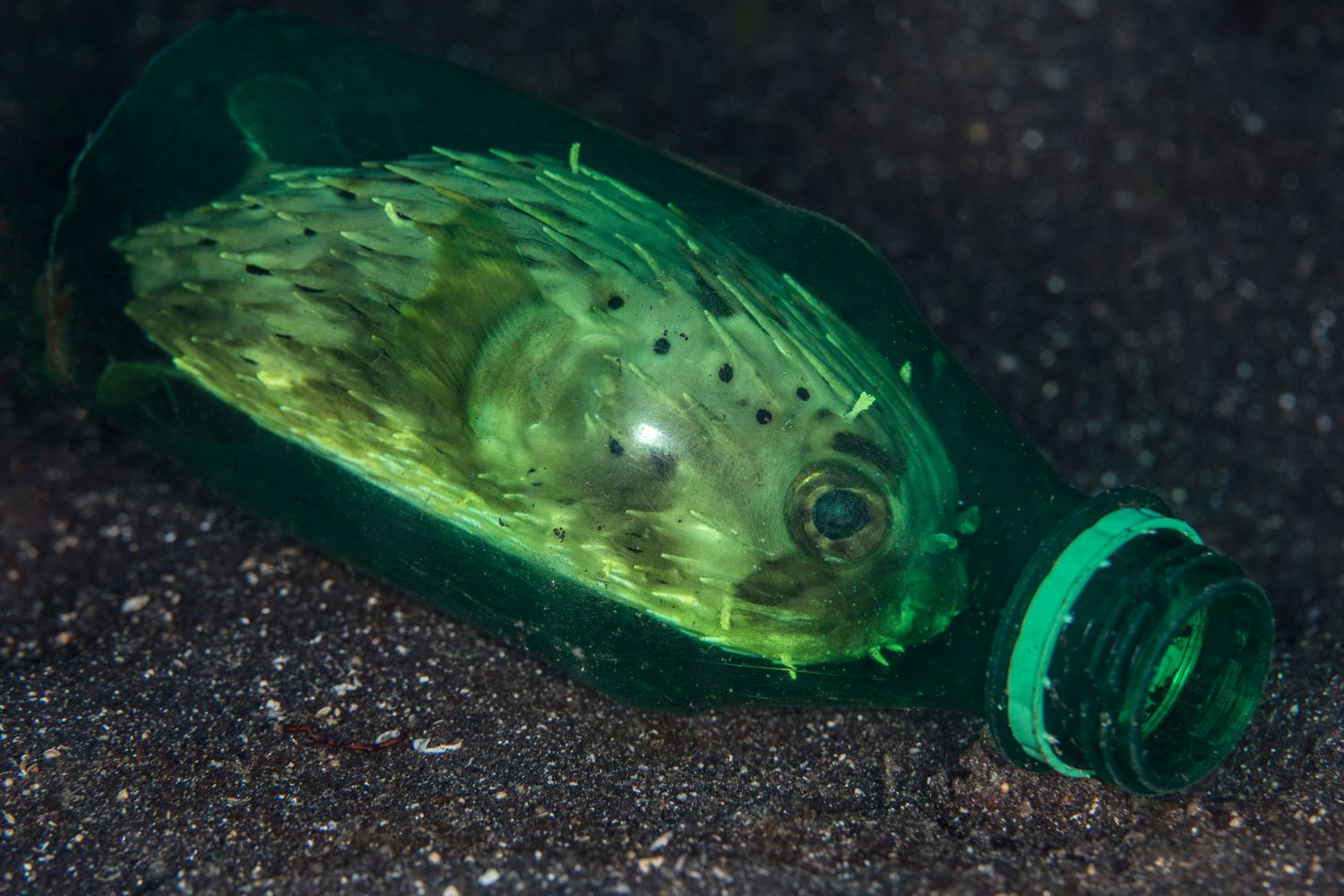
Garbage and waste is an unwanted bi-product and much of it ends up in the ocean
When Conservation Becomes a Selling Point
Dive tourism often markets itself as eco-friendly. Operators highlight conservation efforts, reef clean-ups, and sustainable practices. In many cases, these efforts are genuine and make a real difference. However, in some destinations, “eco-tourism” has become more of a marketing label than a real commitment.
The whale shark encounters in Oslob, Philippines, are one of the most discussed examples. What started as a natural interaction turned into a feeding attraction. Sharks are now conditioned to human presence, altering their migration patterns and feeding behavior. This is a clear case where tourism demand overtook ecological sense.
Similar patterns appear elsewhere. Artificial reef projects and coral nurseries are often built near tourist zones more for visibility than ecological impact. There’s nothing wrong with public education, but we should be careful not to confuse tourist-friendly “conservation” with genuine restoration work.
I was once involved with a conservation volunteer project myself in Mexico; a 6 month project. I was a paying “volunteer” and was excited to go there and do genuine projects to further conservation efforts on the Meso-American reef. But it turned out it was all bogus—the project was a for-profit organization taking money from rich western young people whilst boosting their ego through false conservation.
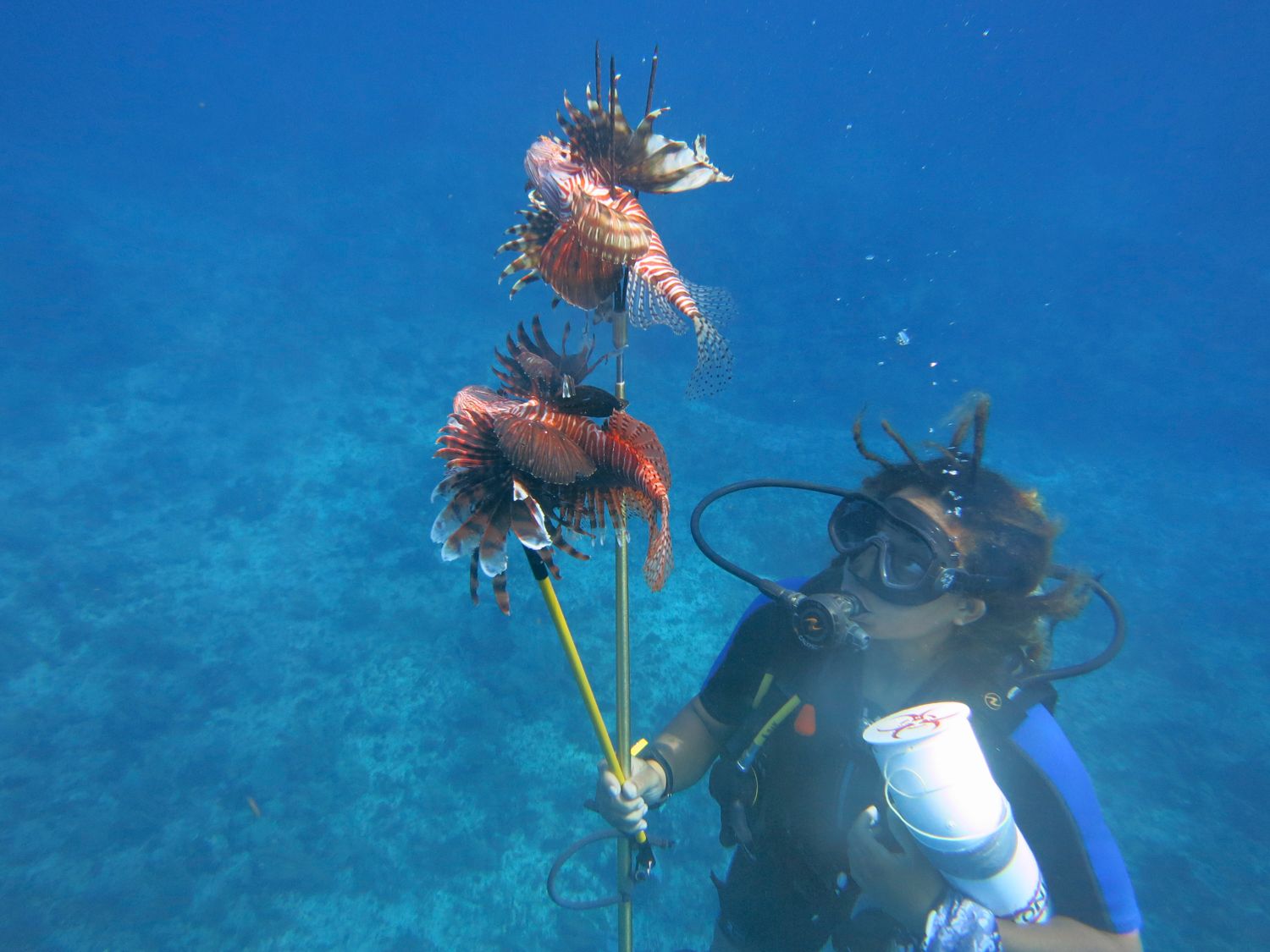
Ensure any marine projects are genuine and not just profiteering from the label
How Diver Behavior Contributes
Many of the problems linked to dive tourism come down to diver behavior. Most of us have seen someone kneel on coral for a photo or chase marine life for a better view. These are rarely acts of malice, they’re usually lapses in judgement or awareness. But they add up. Poor buoyancy control is probably the single biggest cause of direct diver-related reef damage worldwide.
But this is where you come in; it is so easy to rectify this issue for yourself through taking proper dive training and raising your own game. I am proud of the way I dive—it is with intent and respect for the environment. Every move I make underwater, every single fin kick, I do it with consideration of the underwater environment. I wish more divers would get serious about improving their dive style, dropping their egos, and thinking they are better divers than they are.
The rise of underwater photography has also increased pressure on specific sites, and in honesty, most shooters make photography look a lot harder than it is just because they don’t have the required skill to handle their camera rig.
Some divers also expect close encounters with wildlife, and guides, under pressure to satisfy paying clients, might push the boundaries to deliver. Over time, this changes the natural behavior of animals. Moray eels, groupers, or even reef sharks that become accustomed to divers feeding them can lose their natural fear of humans and start behaving aggressively or unnaturally.

Great trim and buoyancy whilst not moving is the real skill of diving and allows you to respect the environment with ease
Examples of Decline and Recovery
There are dive locations that show both sides of this story. In Thailand, Maya Bay became so overrun by snorkelers and divers that the government had to close it completely in 2018. During that closure, coral cover increased and marine life slowly returned. When it reopened, strict visitor limits were introduced. The site now serves as a model for managing recovery through restriction.
Cabo Pulmo in Mexico offers another perspective. Once heavily fished, the local community decided to stop fishing and turn the area into a protected marine park. Diving was allowed but tightly controlled. Within ten years, biomass increased by more than 400%, and the site is now considered one of the best examples of successful community-driven conservation. These examples show that tourism and conservation can coexist, but only when management is proactive and visitor numbers are controlled.
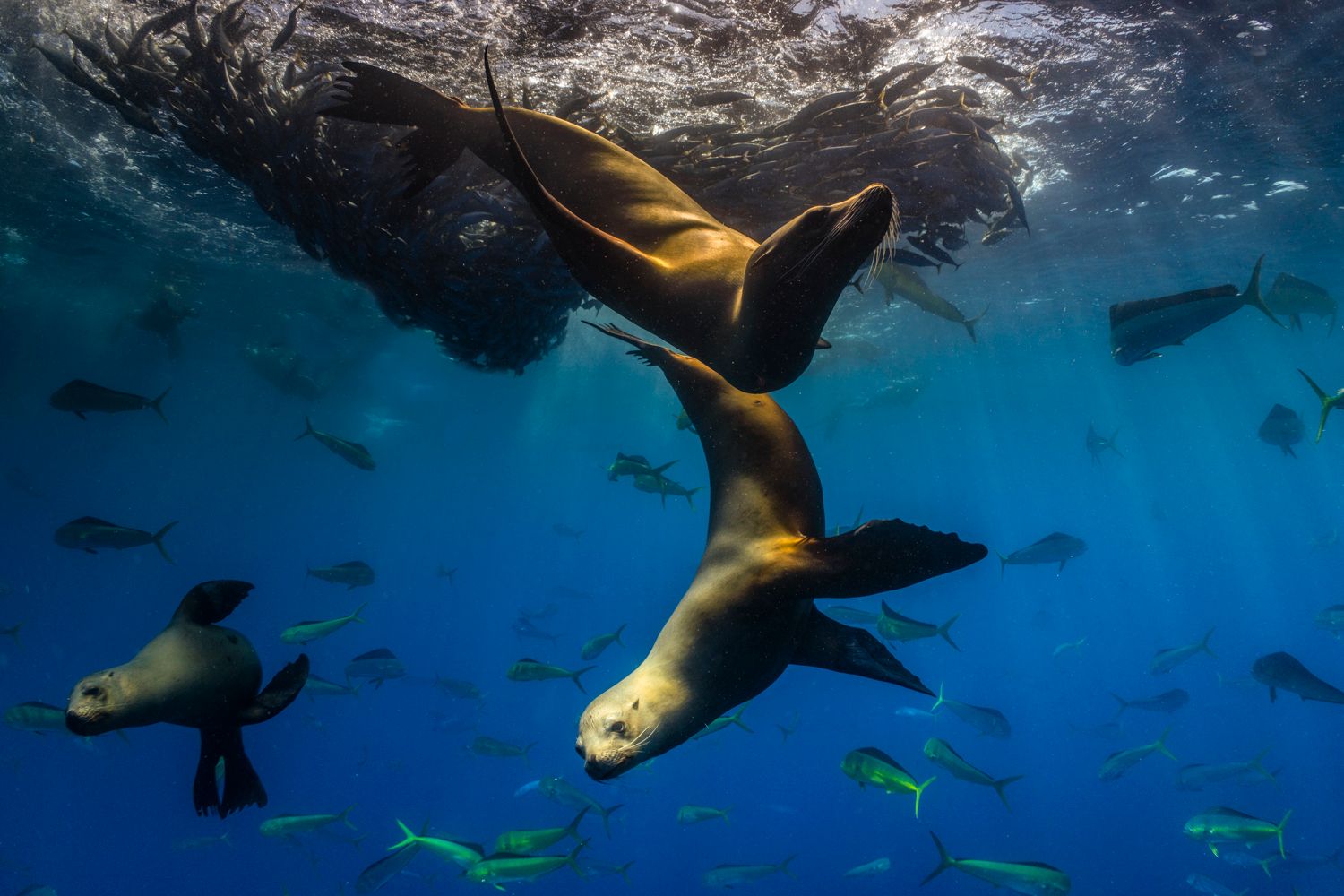
An explosion of Marine life in the waters off the coast of Mexico
What Divers Can Do
While large-scale policy decisions are made by governments and park authorities, individual divers still have influence. The way we dive, choose operators, and travel all contributes to the overall picture.
Choose responsible operators. Look for dive centers that adhere to environmental standards, limit group sizes, use mooring buoys, and support local conservation. Don’t be afraid to ask questions about their practices. A genuine eco-operator will always have clear answers. If you see bullshit on a boat then don’t be afraid to call the operator out, talk with your wallet on these matters.
Maintain precise buoyancy control. Even experienced divers can improve. The hardest skill in diving is to learn to not move, and this means not a single muscle in your body whilst maintaining perfect trim and buoyancy. If you can do this, then diving becomes so easy. I still practice this on every dive and would encourage you to do the same. Practice hovering without movement, use smaller, controlled fin kicks, and keep equipment streamlined. Avoid resting on the bottom or touching coral, even lightly.
Avoid crowding wildlife. Keep a respectful distance from marine animals. If a subject is already surrounded by divers or photographers, wait or move on. Disturbing cleaning stations or altering natural behavior defeats the purpose of responsible diving.
Think about your photography. The best images come from patience and timing, not from taking 500 identical shots. Take 2 or 3 shots and either move on or take a completely different style. You don’t need to overstress a situation—great shooters can be in and out very quickly. Pre set your camera before you even arrive at the subject.
Reduce unnecessary travel. If you’re doing multiple trips a year, consider consolidating travel or staying longer in one region. You’ll often get better dives by staying put and learning one ecosystem in depth. I often take trips of a month or more to the same location, it’s an excellent way to travel.
Support genuine conservation. Pay marine park fees, donate to local NGOs, and participate in legitimate citizen science projects like reef monitoring. These contributions help fund enforcement and education efforts that keep sites healthy. Feel free to question a project, a genuine one will have no problem giving you the answers; a profit making scheme will struggle to.
Set an example. Experienced divers have influence. If you maintain good habits underwater, others notice. If you speak up politely when you see poor practices, it reinforces a culture of respect.

Set the example, great trim , buoyancy and control around the reef
Rethinking the Meaning of Responsible Diving
For many of us, the goal has always been to see as much as possible, to tick off iconic sites and species. But that mindset is part of the problem. Diving responsibly sometimes means skipping a dive, avoiding a crowded site, or accepting that some experiences aren’t worth the cost to the environment. The idea that every dive should deliver spectacle leads to unrealistic expectations and risky behavior.
The best dives I’ve had weren’t necessarily at famous sites. They were often at quieter locations where I could observe natural behavior without disturbance. Those dives often produce the best photographs. If more divers sought those experiences, the pressure on high-traffic reefs would ease.
The Role of Operators and Agencies
Dive operators and training agencies play a huge part in shaping diver behavior. Some now integrate environmental briefings into every dive. That should be standard practice. Just as safety is taught in every course, environmental awareness should be too. Agencies could also update course materials to include information about the ecological impact of diving, not just the physics and physiology.
Operators can limit group sizes, rotate dive sites to allow recovery, and participate in reef monitoring. Some already do this effectively. In places like Palau and Raja Ampat, mandatory marine fees fund management and education, proving that structured tourism can work. The challenge is ensuring compliance across the board.
Be wary of resorts and operators that have a large guide to client ratio; anything above 4-1 is not acceptable and 2-1 is the preference. When diving in such large groups it is impossible to control the situation for any guide and you will be overstressing marine life and reefs at certain points in the dive. We have all seen it when a “ball” of divers descends on a dive site like a swarm of locusts.

Don’t overcrowd or stress the environment
Conclusion
Dive tourism isn’t inherently bad. It provides income, jobs, and incentives for conservation. Many marine parks exist today because of the funding generated by divers. But the balance is delicate. When numbers grow unchecked, or behavior slips, the same industry that depends on healthy reefs can end up degrading them.
Every diver contributes to that balance, whether they realize it or not. By choosing responsible operators, maintaining good control in the water, respecting wildlife, and supporting genuine conservation, we can reduce our individual impact. The most valuable mindset shift is understanding that the ocean doesn’t exist for our entertainment, it’s an ecosystem we are privileged to visit.
If we want future divers to enjoy the same sites we have, we need to treat them with care now. The responsibility sits with all of us, from instructors and photographers to casual recreational divers. Sustainable diving isn’t about restrictions, it’s about respect, discipline, and long-term thinking. The sites that have already suffered are reminders of what happens when enthusiasm outpaces responsibility.
If you do nothing else, check your ego, stop saying how experienced you are and take a long hard look at yourself and your diving style….Do you really treat the reef with the respect it deserves?
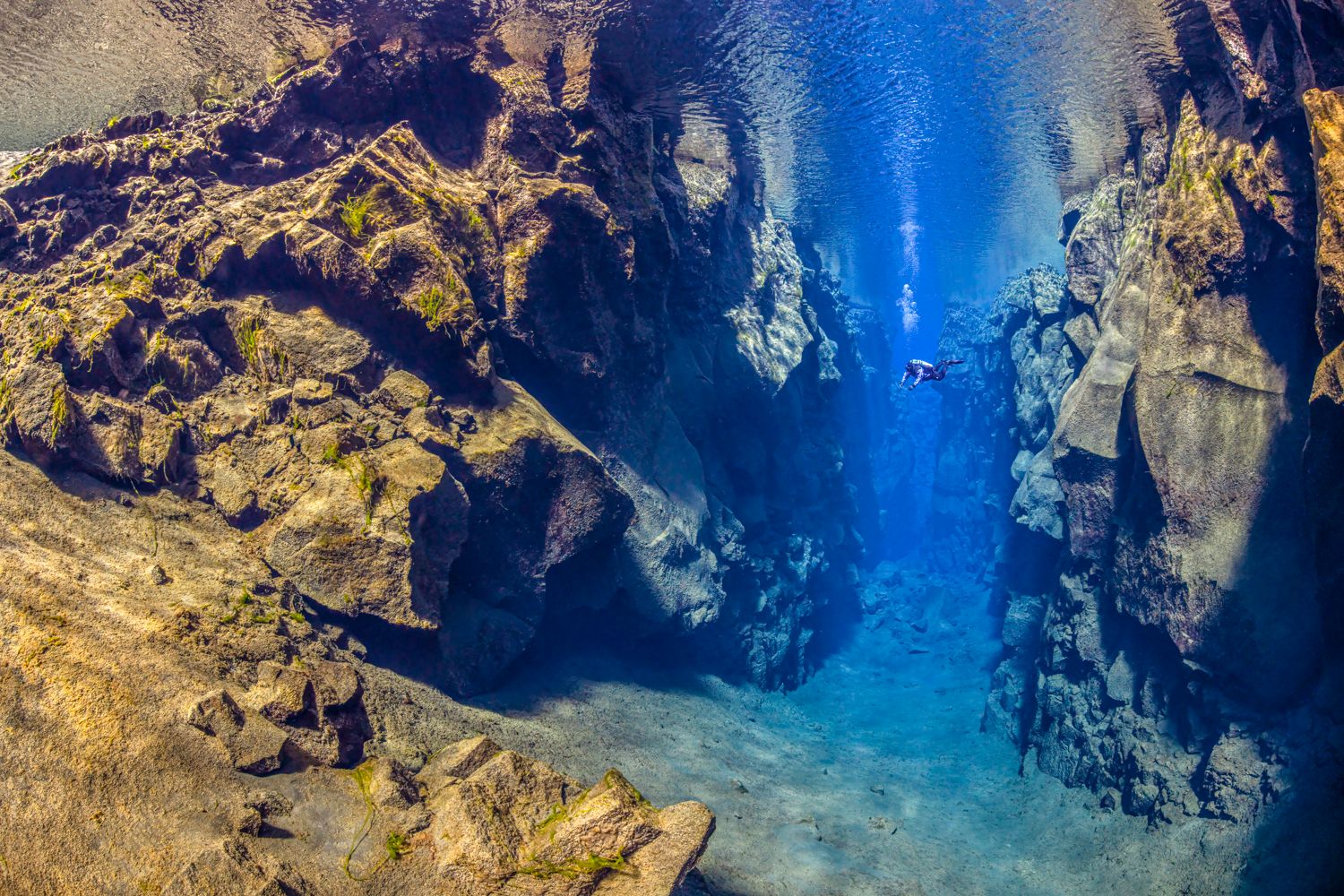
A photo of me diving in Iceland, motionless in trim enjoying the dive
Reply